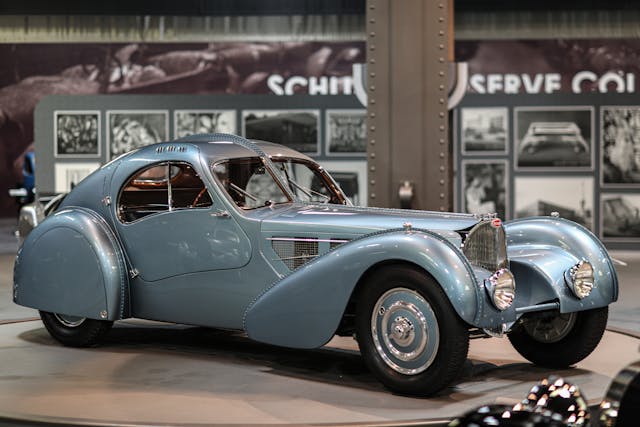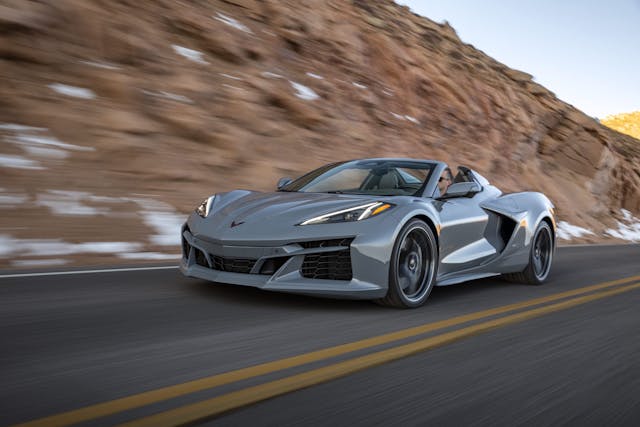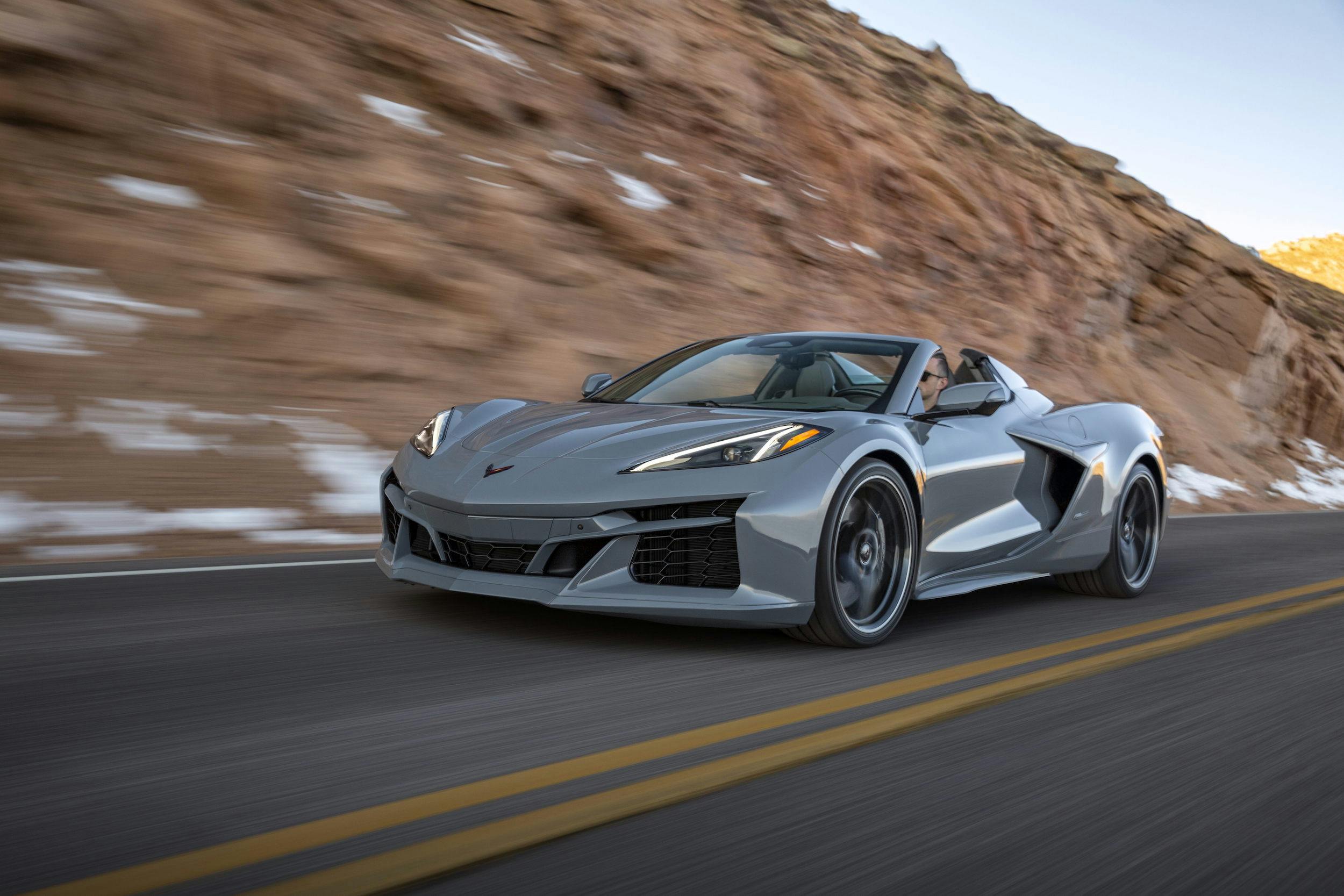Media | Articles
The Best Cars Hit Every 30 Years, and History Says the Next Cycle Is Now
Details matter to car enthusiasts. On any given vehicle, we want to know things like how many cylinders, how many speeds in the transmission, serial number, how fast it is, how many miles are on it, which options it has, and so on. At the most basic level, though, there are three categories—year, make, and model—that tell us most of what we want to know about a particular vehicle, including how desirable it is. And, if we zoom out to the year/make/model level, an interesting pattern emerges. We’re calling it the 30-year cycle in market desirability.
That’s because among all the vehicles enthusiasts and collector consider most desirable, there is a 30-year cycle between peaks in desirability. Consider the many great cars built in the 1930s, like the Bugatti Type 57 or Duesenberg Model J. Then, 30 years later, the cars built in the 1960s, like the Ferrari 250 GTO or Shelby Cobra, are also among the most desirable and valuable cars ever produced. Roll the calendar forward another 30, and certain cars of the 1990s, like the McLaren F1 or Mk IV Toyota Supra, are similarly some of the most desirable.
Why does it happen? Economic, regulatory, and technological factors all play into the cycle. Don’t believe it? Let’s consider the evidence.
Looking at the distribution of value in the Hagerty Price Guide, where the percentages represent the share of total value for each decade, there are peaks in the 1930s, 1960s, and 1990s.

What are behind those peaks?
Marketplace
Buy and sell classics with confidence
The 1930s
Yes, the 1920s produced quite a few great cars, but by the 1930s much of the initial development of the automobile had been considerably refined, both technologically and stylistically. In 1932, for example, Ford introduced the Model 18 with the 221 cubic inch “flathead” V-8 (here we go with those details again!). The 1932 Ford is in Hagerty’s top 10 most insured vehicles in 2024, which is pretty good for a 92-year-old vehicle. Moving up the price range, we have cars like the 1935-36 Auburn 851/852, 1936-37 Cord 810 and 812, and the 1930-35 Cadillac Series 452 V16. Abroad, there was the 1934-39 Bugatti Type 57, 1936-39 Mercedes-Benz 540K, and 1931-39 Alfa Romeo 8Cs.

Further, while the Duesenberg Model J was introduced in 1928, that car is more closely associated with the 1930s as it underlines the gap between the wealthy Duesenberg customers and everyone else in the Great Depression that began in 1929. The Model J also illustrates how technology developed in a prior decade gets refined and becomes available on the market after the economic environment that spurred its development has passed. The window for these vehicles closed when an outside factor changed the market again. In the 1940s, it was World War II. We’ll see this cycle again for the subsequent peaks: economic growth funds technical development until the music changes, the market resets, and the cycle starts over.
The 1960s
The 1960s are considered a high point in automotive design, and cars from that decade are among the most desirable ever built. Cars of the 1960s combined high performance, good looks, and accessibility that few periods could match. Yes, the 1950s had many desirable vehicles, but it wasn’t until the 1960s that features like disc brakes and monocoque chassis became widely available. In no particular order, there’s the 1961 Jaguar E-Type, 1963 Chevrolet Corvette, 1965 Ford Mustang, 1964 Porsche 911, 1963 Aston Martin DB5, 1962 Shelby Cobra, 1962 MG MGB, 1966 Lamborghini Miura, and 1967 Chevrolet Camaro.

Beyond those road cars, there are race cars like the 1962 Ferrari 250 GTO, 1964 Ford GT40, and 1963 Alfa Romeo TZ. The Hagerty Price Guide contains more 1960s vehicle generations (such as the 1962-67 Shelby Cobra), where the max condition #1 (concours) value is at least $1,000,000 than any other decade.
As with the 1930s, the vehicles of the 1960s faded due to external factors. However, this time the factors were a combination of safety and emission regulations, fuel prices, and insurance costs.
The 1990s
With the unsavory combination of reduced power and additional weight, vehicles of the 1970s are generally seen as a low point for enthusiasts. However, as computers improved in the 1980s, concurrent with the world economy growing quickly, automobiles got a lot better. Except it wasn’t until the 1990s that carmakers, especially Japanese ones, launched their best vehicles. Among them are the first-generation Mazda MX-5 Miata, the 1991-2005 Acura NSX, the 1992-2002 Dodge Viper, the 1994-98 Porsche 911 (993), 1998-2002 Nissan Skyline R34 GT-R, and 1994-99 Ferrari F355. At the higher end were the 1995-97 Ferrari F50, 1991-95 Bugatti EB110, 1998-99 Mercedes-Benz CLK GTR, and the 1992-98 McLaren F1. Many of these vehicles still had manual transmissions, naturally aspirated engines, and minimal electronic aids, a combination that today’s enthusiasts and collectors actively seek out.

As with the 1920s leading into the 1930s, and the 1950s leading into the 1960s, the economic growth and technological achievements of the 1980s led to some great vehicles in the following decade.
The 2020s
As we are still in the middle of the 2020s, it is challenging to identify the vehicles that will represent a new peak in desirability, but we can make some predictions. With hybrids and EVs becoming increasingly common throughout the market, some of these will likely be among the most desirable vehicles of the future. High-performance EVs from Tesla, Lucid, and Rimac will likely be among the latest batch of highly desirable cars.

Hybrids such as the new Chevrolet Corvette E-Ray, Ferrari 296, McLaren Artura, and Porsche 992 GTS may also be among them. Also, cars capturing the end of pure internal combustion engine will likely be there, too. Cars like the 2020-23 Ford Mustang Shelby GT500 and Dodge Challenger SRT Hellcats are likely. So are their truck cousins: the Bronco Raptor and F-150 Raptor R and Ram 1500 TRX. Among the supercars on the market currently and that seem destined for enduring appeal are vehicles like Gordon Murray Automotive (GMA) T.50, Singer DLS, Ruf SCR, Porsche 992 S/T, and perhaps some version of the Ferrari 499.
Perhaps the cycle won’t repeat, and vehicles with even greater desirability will be seen in the 2030s. But if not, and this decade becomes another historical high point in car design, which vehicles of the 2020s do you think will be the next most desirable?
***
Check out the Hagerty Media homepage so you don’t miss a single story, or better yet, bookmark it. To get our best stories delivered right to your inbox, subscribe to our newsletters.








I think this needs a thesis level of investigation to convince me…
The depression hammered innovation (and greatly reduced the field of players) and WWII stalled everything. US domestic production resumes and you have warmed over 41/42 models as your 46+. Some models weren’t new until into the 50s. The “full classics” became collectible with the CCCA creating the definition and the exclusive club in 1952. This is really important because if a bunch of rich people hadn’t decided this was a prestige pursuit to have… most of these would have been scrapped or used up by the 50s racers.
The mentality of full classics has dipped into the top tier of various other vehicle niches. Musuem/living room cars that barely (if ever) drive and are handled as investment commodities. No different than sealing comic books up in plastic cases and having them graded (which means they can’t be read…)
The average car person doesn’t pine for a Stutz and hasn’t since the 30s. Restored/survivor non “full classics” have some value but you look at the prices on a 38 Chev Sedan that is tired and you are underwater doing anything with it. Things like 32 Fords have great value because the of the hot rod community valuing them.
I remember when 57 Bel Airs and 55 T-birds were top dog cars in the collector world. That has shifted to newer things, not that prices have dropped just things like Hemi anything have shot past. If you read muscle car magazines in the 80s some of them barely covered the Chrysler product… look how they dominate auction values now.
I can agree that a variety of factors will keep values down on most 70s and 80s vehicles for a long time. I am not convinced that anything that performs 2000+ won’t be as desirable as some of the 90s stuff has become recently. The ability to deal with the electronics will scare some, but Hellcats for example people are going to figure it out. We’re not going to see modern Ferraris going in scrap drives.
It is supply and demand. The 57 Chevy was all it could be when they were easy to find.
Then the GM and then Ford Muscle was found and bought up. Today we have had the Mopar finally reach demand. Back in the 80’s few wanted a Mopar but today with much better system of restoration parts people are buying up more than the rare Hemi.
The 70’s cars are slow to gain as few parts to restore many. Higher use of plastics that fell appart and nothing to replace them. Also more junk yards are now disassembling cars and scraping them they focus more on new cars and few have 50 year old cars to pick over.
Until there is demand and parts made these newer cars will be slow to restore and best to buy whole if you can find one. Even a Paint job is worth more than some cars.
Yes, there are some desirable vehicles from the 1950s, but in aggregate that decade is overshadowed by the desirable vehicles of the 1960s. Also, Full Classics is a retrospective classification applied to some of the advanced vehicles built in the 1930s, but neither the origins of that term nor how some of those vehicles are used today, doesn’t change their inherent desirable qualities.
Too much info mis mashed into nothing almost.
… your list missed out on including the Camaros of the past few years. A better car than the curb busting Mustang.
Absolutely I was just going to mention those I still can’t believe GM dumped the Camaro AGAIN
Better in some ways but very few years out-sold the pony.
100% agree. V8 supercharged manual ZL1s will be fought for when 98% of market will be EV in the not so distant future.
Absolutely not. Hardly anyone makes coupes anymore. The Japanese brands don’t have the depth of performance cars that they used to. The amount of choice just isn’t out there to justify that idea. I would argue around 2009 was much better.
Uh…with all due respect, the premise of this article is a rather large stretch…
Innovation seems to drive each of these epochs. To that end, cars that can combine engaging dynamics and alternative propulsion (hybrid, full EV, highly-efficient ICE) will probably end up lasting and becoming The Next Big Thing That Was. Sure, the “purists” (and most of Hagerty’s commentariat) won’t agree, but we can say that about any era.
My sentiments exactly.
But then you just never know what’s going to be commanding big money. K5 blazers, 66-77 Broncos and anything with a pickup bed are through the roof where they were throw away items back in the day.
Any vehicle with a gas engine and manual transmission from this decade will be desirable in the future.
Amen. Especially with big HP and limited numbers.
The 1990’s segment should have included the car that performed with many of those listed for 1/2 the price- The 1990 Chevrolet Corvette ZR-1.
I totally agree and also would addthe C5 model
Agreed on the 1990 ZR-1. I think they also excluded the 1991 GMC Syclone and the 1992/1993 GMC Typhoon.
Not so sure about the premise of this article but 90’s and 80’s cars are definitely on the rise.
This isn’t so much about which vehicles are appreciating, but here’s a more precise look at which vehicles from the 1980s and 1990s are on the rise and by how much.
https://www.hagerty.com/media/market-trends/hagerty-insider/introducing-the-radindex/
The 05 Chrysler SRT 8 changed hot rodding with great speed and lots of parts for the average person
Too few data points currently to draw an accurate conclusion. Let’s revisit your hypothesis in 2330. Hahahaha
Seriously though, while I’m not seeing the correlation you describe, I am seeing many outstanding counterpoints from the ’70s, ’80s, ’00s, and 10s.
I’m curious how vehicles from the 2020s will look in another 20 to 30 years, too. Also, this is about groups of peak vehicles. An occasional counterpoint in another decade doesn’t change things.
Did you intentionally leave out one of the most carefully and thoroughly engineered car in decade…the 1994 Toyota Supra? Just look to the statistics, records and performance characteristics through ALL of the independent studies of the day and the staying power of wonderful engineering…not that it was in a movie!
Poppycock!
“Poppycock”
Would you care to elaborate?
I would like to get more information on your options for coverage. I have two vehicles I’d like to get vintage coverage for. These are a 2005 Thunderbird 50th. Anniversary and a 1981 DeLorean DMC – 12.
What did the HEMI CUDA sell for today ?